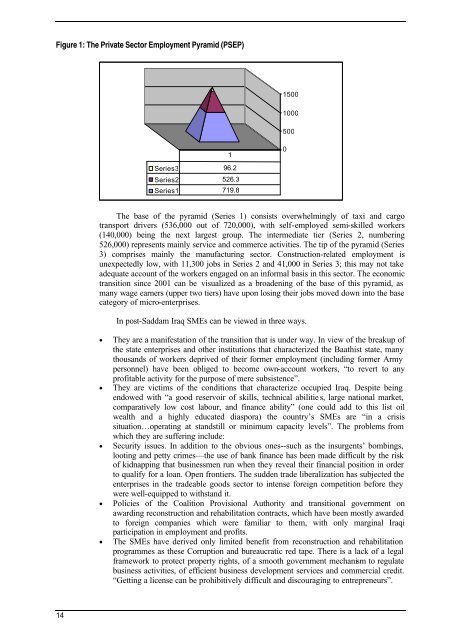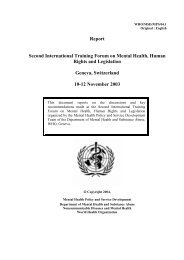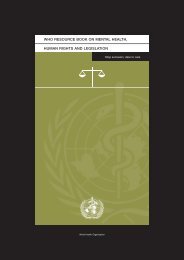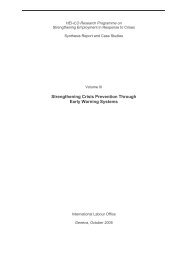Volume 1 Cedric - revised luca Final - RUIG-GIAN
Volume 1 Cedric - revised luca Final - RUIG-GIAN
Volume 1 Cedric - revised luca Final - RUIG-GIAN
You also want an ePaper? Increase the reach of your titles
YUMPU automatically turns print PDFs into web optimized ePapers that Google loves.
Figure 1: The Private Sector Employment Pyramid (PSEP)1500100050010Series3 96.2Series2 526.3Series1 719.8The base of the pyramid (Series 1) consists overwhelmingly of taxi and cargotransport drivers (536,000 out of 720,000), with self-employed semi-skilled workers(140,000) being the next largest group. The intermediate tier (Series 2, numbering526,000) represents mainly service and commerce activities. The tip of the pyramid (Series3) comprises mainly the manufacturing sector. Construction-related employment isunexpectedly low, with 11,300 jobs in Series 2 and 41,000 in Series 3; this may not takeadequate account of the workers engaged on an informal basis in this sector. The economictransition since 2001 can be visualized as a broadening of the base of this pyramid, asmany wage earners (upper two tiers) have upon losing their jobs moved down into the basecategory of micro-enterprises.In post-Saddam Iraq SMEs can be viewed in three ways.• They are a manifestation of the transition that is under way. In view of the breakup ofthe state enterprises and other institutions that characterized the Baathist state, manythousands of workers deprived of their former employment (including former Armypersonnel) have been obliged to become own-account workers, “to revert to anyprofitable activity for the purpose of mere subsistence”.• They are victims of the conditions that characterize occupied Iraq. Despite beingendowed with “a good reservoir of skills, technical abilitie s, large national market,comparatively low cost labour, and finance ability” (one could add to this list oilwealth and a highly educated diaspora) the country’s SMEs are “in a crisissituation…operating at standstill or minimum capacity levels”. The problems fromwhich they are suffering include:• Security issues. In addition to the obvious ones--such as the insurgents’ bombings,looting and petty crimes—the use of bank finance has been made difficult by the riskof kidnapping that businessmen run when they reveal their financial position in orderto qualify for a loan. Open frontiers. The sudden trade liberalization has subjected theenterprises in the tradeable goods sector to intense foreign competition before theywere well-equipped to withstand it.• Policies of the Coalition Provisional Authority and transitional government onawarding reconstruction and rehabilitation contracts, which have been mostly awardedto foreign companies which were familiar to them, with only marginal Iraqiparticipation in employment and profits.• The SMEs have derived only limited benefit from reconstruction and rehabilitationprogrammes as these Corruption and bureaucratic red tape. There is a lack of a legalframework to protect property rights, of a smooth government mechanism to regulatebusiness activities, of efficient business development services and commercial credit.“Getting a license can be prohibitively difficult and discouraging to entrepreneurs”.14














